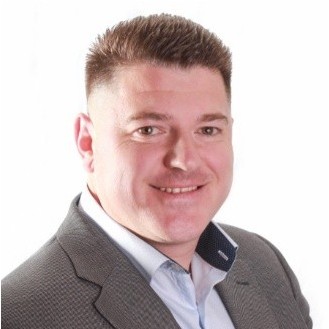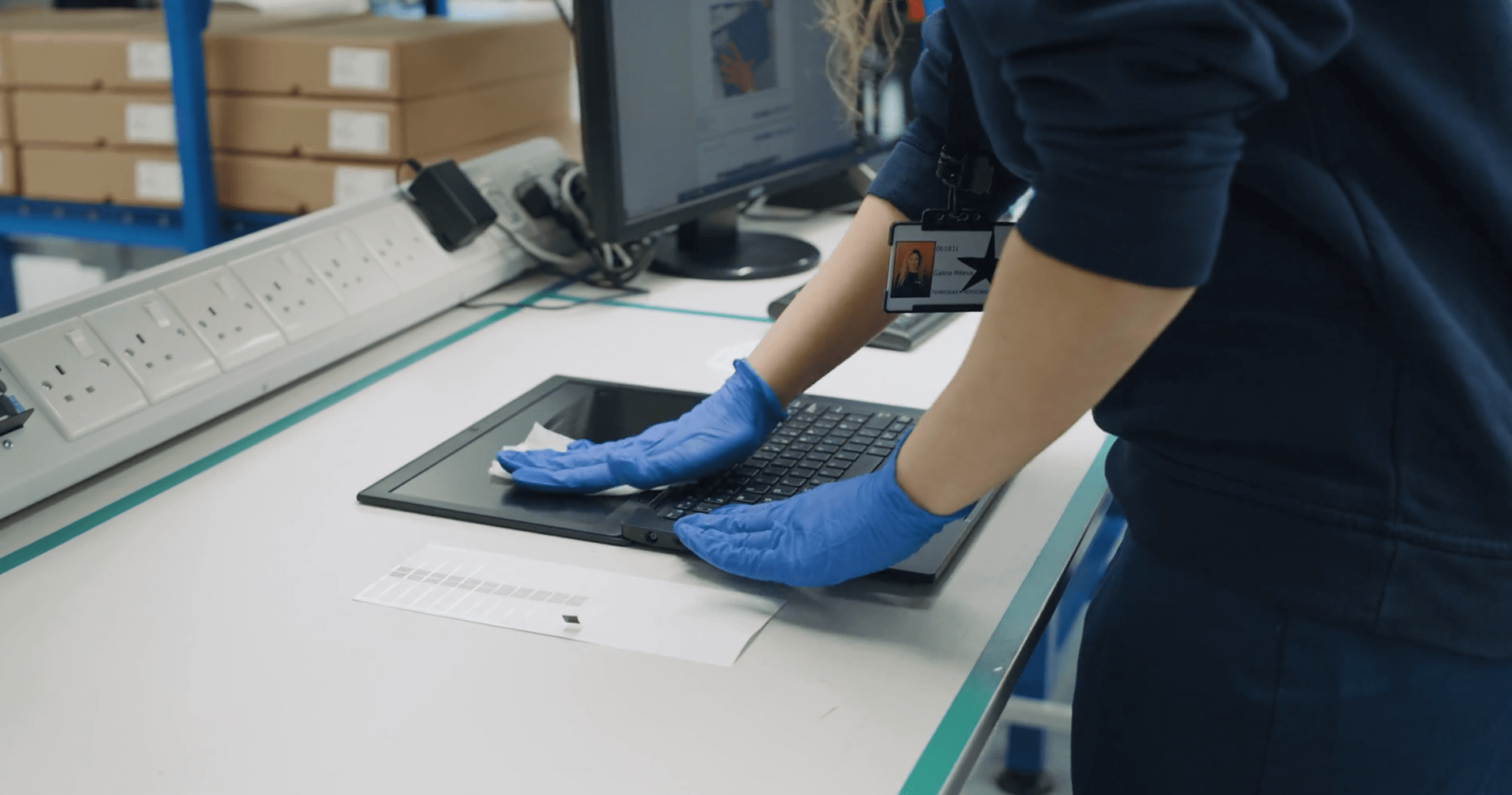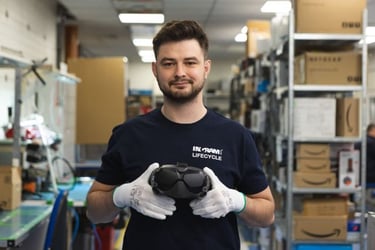Are you looking to boost value recovery on product returns and minimize waste?
Product returns are unavoidable, but you can improve your returns handling processes to turn them into a revenue stream while reducing the waste they generate.
Ingram Micro Lifecycle operates end-to-end solutions, starting with returns management processes that include repair and refurbishment, to uplift product grade, quality, and value. Once products have been recovered, we have an extensive network of recommerce opportunities to sell second-life products.
In this article, we’ll equip you with tactics for increasing yields of product returns suitable for reuse, optimizing these as a revenue stream, and improving sustainability efforts.
Causes of product returns
When selling or leasing technology, returns are inevitable, so it’s best to have a strong returns management program in place in advance to ensure a seamless transition. While some returns may occur for fraudulent reasons, legitimate causes include:
- DOA (Dead On Arrival) or parts failure; the product is unusable or doesn’t meet user expectations
- Unwanted or change of mind can be triggered by delivery delays, finding the product cheaper elsewhere, or an alternative that better suits the user’s needs
- Transit damage; perhaps the packaging wasn’t as robust as necessary, or the journey was a little too bumpy so the product isn’t to high enough standards
- Insurance or warranty claim; this could fall under the standard terms and conditions of purchase or through an extended warranty/bolted-on insurance product
- Trade-in or buyback schemes; an inherent part of these is receiving used technology and returns management efficiency is essential
The importance of innovation in returns
Staying agile allows your processes to flex with volumes and product ranges. The wider the capabilities of the products you handle through returns, the wider your capabilities must be. Being able to innovate will lead to more efficient handling of tomorrow’s technology. As the products advance, so must you and your returns handling processes. This is vital as technology constantly evolves, so you cannot remain competitive if you lag behind.
Thinking outside of the box and seeking new methods to combine processes, such as AI and automation, perhaps leads to more comprehensive repair and refurbishment outputs. Just because something has historically been done a certain way doesn’t mean it needs to continue that way if it means boosting deliverables.
Aiming for continuous improvement enables cost savings and waste reduction, leading to better economic and environmental sustainability.
Tactics to increase product value recovery
The steps below all boost the attractiveness and function of product returns. Depending on the condition or type of the product when received, not all steps are needed.
Non-invasive refurbishment
These are cosmetic improvements that don’t involve taking the product apart. These steps are ideal for like-new products, those just out of the box, are unopened, or have received very light use and are still fully functional. For products requiring invasive techniques to restore working conditions, these non-invasive steps may come afterward to lift the potential value as much as possible.
Diamond Substrate Polishing
This solution restores the top layer of glass on LED/LCD screens, effective for devices with scuffs and small scratches on the screens.
LCD repair
For more intensive scratches and scuffs on glass screens, remove the top layer of glass from a smartphone and replace it with a brand-new or like-new donor layer.
Cleaning
A thorough cleaning to high standards makes a product more hygienic and appealing, particularly important for SDAs (Small Domestic Appliances) such as air fryers and hair stylers. Products like these are prone to house residue from food oils and hair care/styling products.
Reboxing
This entails putting the product in a brand-new box, typically after invasive repair (if required) and the tactics above. The product becomes more presentable to potential customers and gives a better first impression of quality. It’s best to use recyclable materials or even packaging made from recycled materials, for waste reduction.
Rekitting
Accessorizing the product with everything a potential customer may need to use it makes for a more attractive offering. Rekitting saves customer time and effort as it removes the need to shop around and get components from multiple places. Peripherals to box with the product can include power cables, earphones, controllers, etc. depending on the product type.
Laptop reprinting & reskinning
Keyboard reprinting restores the lettering on used laptops. Over time, frequent use sometimes wears away the printed letters, becoming indistinguishable. Reprinting the letters makes them easier to use and more desirable.
Reskinning recovers the outer face shell of the screen, which may have become damaged by slight scuffs or scratches. This is done in the same color as the original surface so restoration isn’t noticeable and will incorporate any OEM logos depicted.
Invasive refurbishment and repair
This is more intensive and technical than the tactics outlined above. As such, the outer casing or shell of the product is removed carefully to access the parts and components within. These largely restore functions of the product that are required to satisfy user expectations of performance.
Product stripdown
This is initially required for non-functional or DOA products to determine the problem. While this isn’t a curative solution, the diagnosis is needed to determine the next remedial step. This will eliminate the potential for conducting unnecessary work and focus efforts on the true problems.
Donor parts
To avoid or reduce the purchase of brand-new parts or components, consider keeping or accessing an inventory of used, high-quality, genuine parts to be used instead. These can be harvested from product returns that are beyond economical repair, to minimize product waste. Where single parts or components are still useable, consider storing these for future use to restore the function of other products. This approach minimizes costs and boosts sustainability by reducing waste and the pressure on manufacturing/use of raw materials.
OEM accreditations
By gaining OEM accreditations, you’ll have access to manufacturer-approved repair manuals and guides, plus genuine parts to deliver high-quality repairs. This boosts successful repair yields by ensuring you follow the correct repair steps. It also provides a source of reliable parts.
Enabling a second life through recommerce
On average, we see that over 80% of SDA product returns can be successfully restored to full working condition. Recovery tactics create a supply of reconditioned products to resell to recover value and develop these as an additional revenue stream for your business. This is where recommerce comes in.
Through your repair and refurbishment processes, you’ll have a constant supply of refurbished products. These are in growing consumer and market demand as an alternative to brand-new products, as these are more affordable, sustainable, and accessible.
There are numerous sustainability benefits to product recovery and recommerce as you eliminate or reduce the volume of waste that you commit to landfill, instead extending the lifecycles of technology that’s suitable for reuse.
Turn your returns into revenue today
There are a variety of techniques that are both invasive and non-invasive to uplift the condition of a product return to restore it to a saleable and attractive condition. Through these approaches, you’ll recover a higher value than the previous condition in which the products were returned.
Ingram Micro Lifecycle has been managing returns for customers for over 30 years and has a global footprint, working with customers of all sizes and industries to manage their technology product inventory – optimizing reuse wherever possible.
Get in touch to discuss how we can maximize value recovery on your product returns.
Recommended reading:
- 5 ways a technology circular economy boosts your sustainability goals
- 8 ways 3PL transforms reverse logistics for a circular economy
- How to recover value from smartphones with damaged screens
- What is e-waste and the environmental toll of our tech habits?
- 11 benefits of returns management for Small Domestic Appliances













